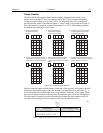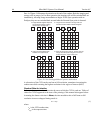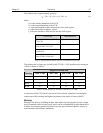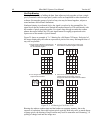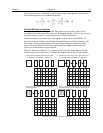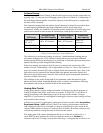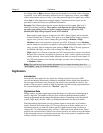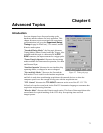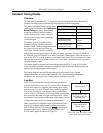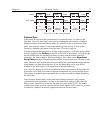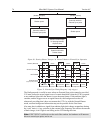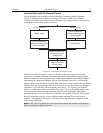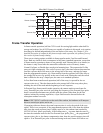
Chapter 5 Operation 71
the Analog Gain to High so that the signal can be spread over as much of the A/D range
as possible. Users who consistently measure low-level signals may wish to select High,
which reduces some sources of noise. Users who measure high-level signals may wish to
select Low to allow digitization of larger signals. Customized values of gain can be
provided. Contact the factory for additional information.
Example: The following descriptions assum
e that the actual incoming light level is
identical in all three instances. The numbers used illustrate the effect of changing
an analog gain setting and do not reflect actual performance: gain at the Low,
Medium, and High settings depends on the CCD installed.
Low requires eight electrons to generate one ADU. Strong signals can be acquired
without flooding the CCD array
. If the gain is set to Low and the images or spectra
appear weak, you may want to change the gain setting to Medium or High.
Medium requires four electrons to generate one ADU. If the gain is set to Medium
and the im
ages or spectra do not appear to take up the full dynamic range of the CCD
array, you may want to change the gain setting to High. If the CCD array appears to
be flooded with light, you may want to change the setting to Low.
High requires two electron to generate one ADU and som
e noise sources are reduced.
Because fewer electrons are needed to generate an ADU, weaker signals can be more
readily detected. Lower noise further enhances the ability to acquire weak signals. If
the CCD array appears to be flooded with light, you may want to change the setting
to Medium or Low.
Note: The baseline level may require adjustment if you change the analog gain. See
"ADC Offset", page 59, for more information.
Digitization
Introduction
After gain has been applied to the signal, the Analog-to-Digital Converter (ADC)
converts that analog information (continuous amplitudes) into a digital data (quantified,
discrete steps) that can be read, displayed, and stored by the application software. The
number of bits per pixel is based on both the hardware and the settings programmed into
the camera through the software (see "Readout", page
60).
Digitization Rate
During readout, an analog signal representing the charge of each pixel (or binned group of
pixels) is digitized. The number of bits per pixel is based on both the hardware and the
settings programmed into the camera through the software. Depending on the MicroMAX
system, single, dual (100 kHz/1 MHz), or multiple digitization rates may be available.
Dual and multiple digitization provide optimum
signal-to-noise ratios at all readout
speeds. Because the readout noise of CCD arrays increases with the readout rate, it is
sometimes necessary to trade off readout speed for high dynamic range. In the most
common ST-133 configurations, there will be a 1 MHz conversion speed for the fastest
possible data collection and a 100 kHz conversion speed for use where noise performance
is the paramount concern. Switching between the conversion speeds is completely under
software control for total experiment automation.



